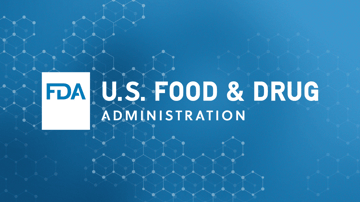Supply chain traceability is key to solving quality incidents in our food system. This year has certainly started by spotlighting what is not working in food traceability. When it comes to the safety of food, traceability has to go more than one lot up and one lot back.
By now you have probably heard about E. coli O157:H7 contaminated romaine lettuce. The industry is under scrutiny as consumers ask “Why has it taken so long to identify the source of the outbreak?” The original symptoms of illness were reported on March 13th and the CDC verified an E. coli outbreak on April 10. While the romaine has been traced to a farm in Yuma, Arizona, an isolated case in Nome, Alaska suggests there could be more than one supplier sending out contaminated product.
The details of the outbreak are still being investigated by the CDC and the FDA, but as food safety professionals know, time is your biggest factor in preventing outbreaks and responding to recalls. Getting to the source and tracking down produce through a complex supply chain of growers, distribution centers, manufacturers, and retailers takes time.
Once an outbreak is detected and reported to the CDC, three weeks may have passed. The reason for the time lag has to do with effectively reporting cases such as E. coli from a health care practitioner to the CDC. Once the FDA becomes involved in the investigation, a few more weeks may have passed.
With the speed and volume of the produce supply chain, the contaminated romaine gets distributed quickly. There are safety checks and software solutions for food traceability that help ensure sanitation and food safety standards are met to reduce the likelihood of an outbreak. Tracing a product throughout this system is done through the use of barcodes, QR codes, and identification numbers, but with the number of exchanges, it is possible for this information to get lost during transfer.
Let’s take a look at some of the issues with tracing the contaminated romaine lettuce:
- Romaine lettuce has a shelf life of several weeks. The contaminated lettuce could still be in restaurants, stores, and homes.
- Identifying where a product was grown is complex. Growing regions such as Yuma, Arizona are not generally labeled on the packaging.
- Romaine lettuce lots might be complicated to track once they leave the farm. Romaine lettuce is sold as whole heads and hearts of romaine, chopped romaine, baby romaine, organic romaine, and salads and salad mixes.
- Restaurants and retailers rely on suppliers to determine the source of their romaine lettuce.
- Not all records are uploaded digitally by suppliers.
You need to protect your brand from an outbreak. Technology can provide supply chain visibility and ensure the flow of quality information among all stakeholders. Quality information is critical to maintaining food safety and quality, meeting regulatory requirements, and responding quickly to recalls. FoodLogiQ Connect allows you to house all your data in a centralized location. FoodLogiQ provides supplier information, lot numbers, and supply chain traceability at the click of a button.
FoodLogiQ, the leading provider of food safety, traceability, and supply chain transparency software, is the go-to solution for produce growers, co-packers, and distributors seeking global supply chain visibility, streamlined supplier management, and quality issue tracking and reporting.
For more information on FoodLogiQ's solutions, request a demo.
Other posts you might be interested in
View All Posts
Traceability
3 min read
| July 21, 2016
Why Whole Chain Traceability is Becoming the Industry Standard
Read More
Traceability
5 min read
| November 19, 2019
Food Safety & Traceability Buyer's Guide
Read More
Traceability
6 min read
| January 29, 2021

